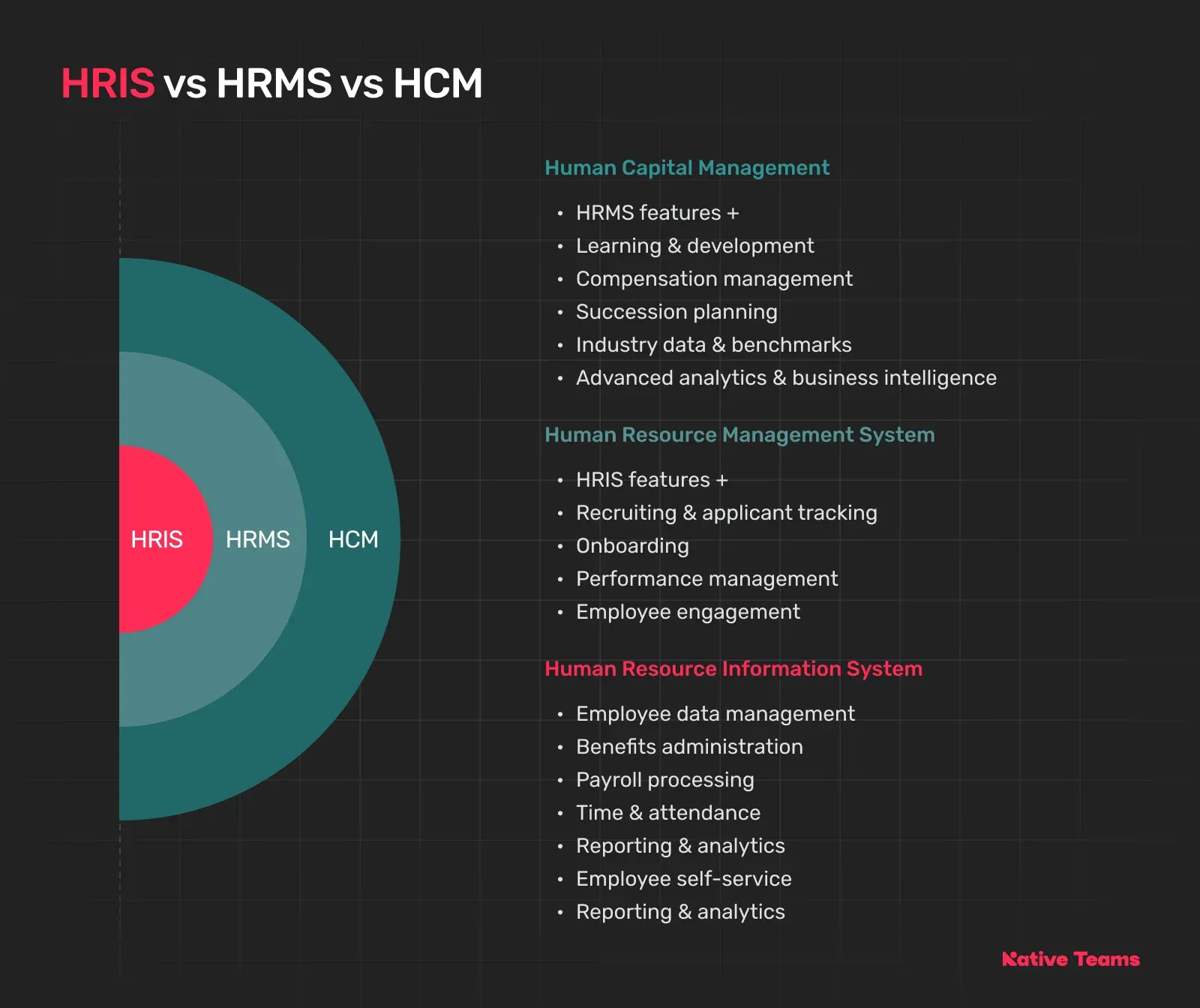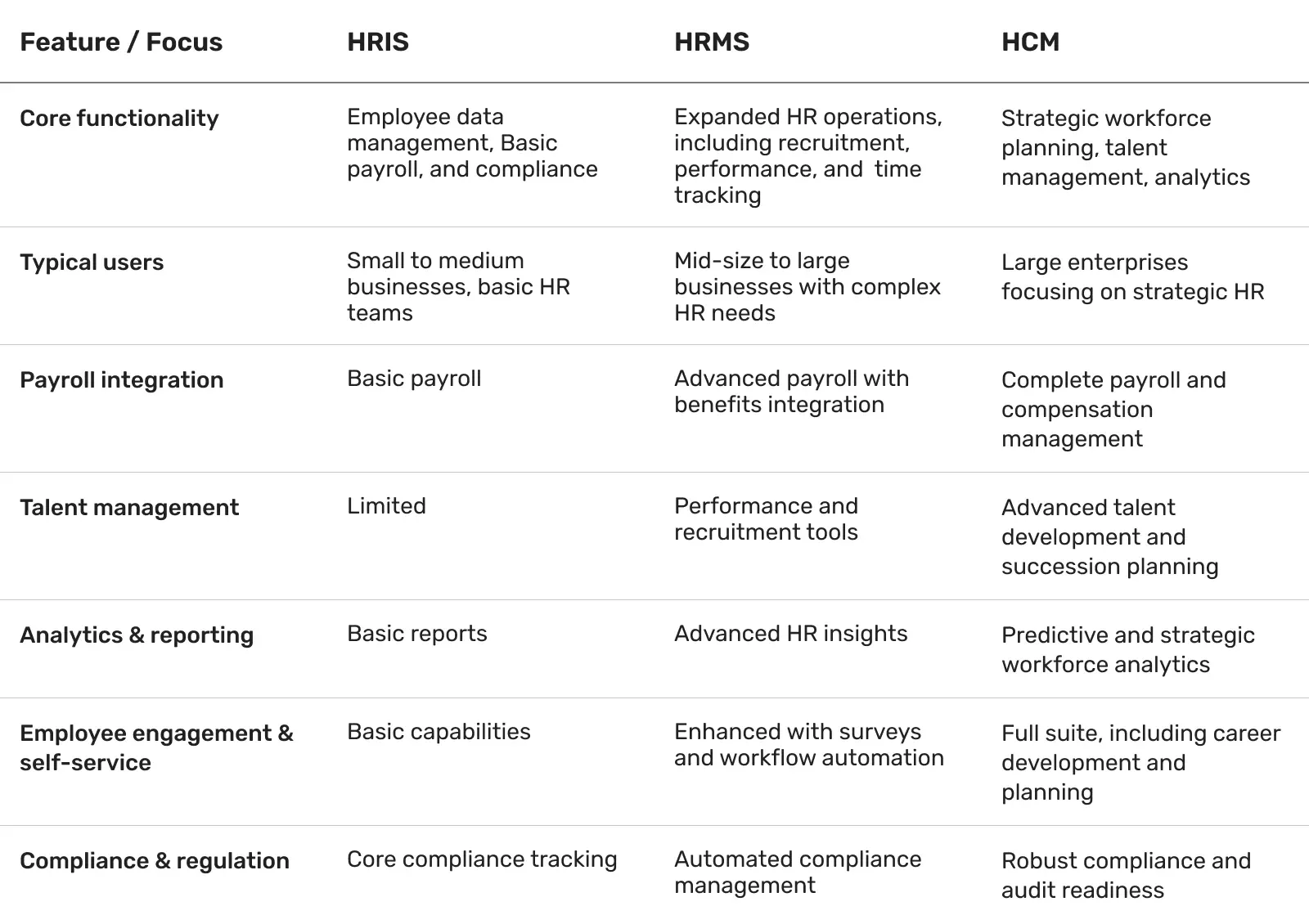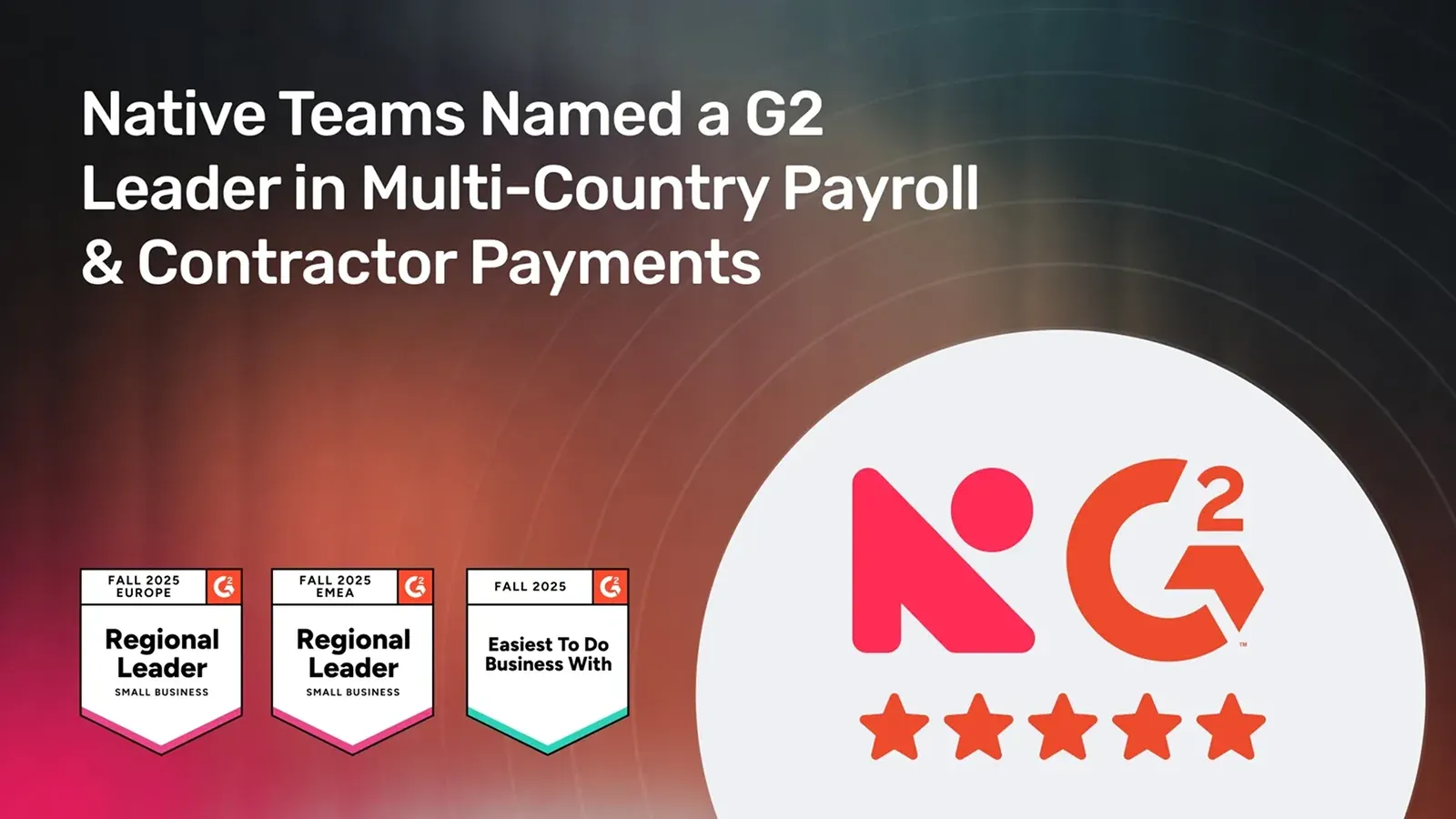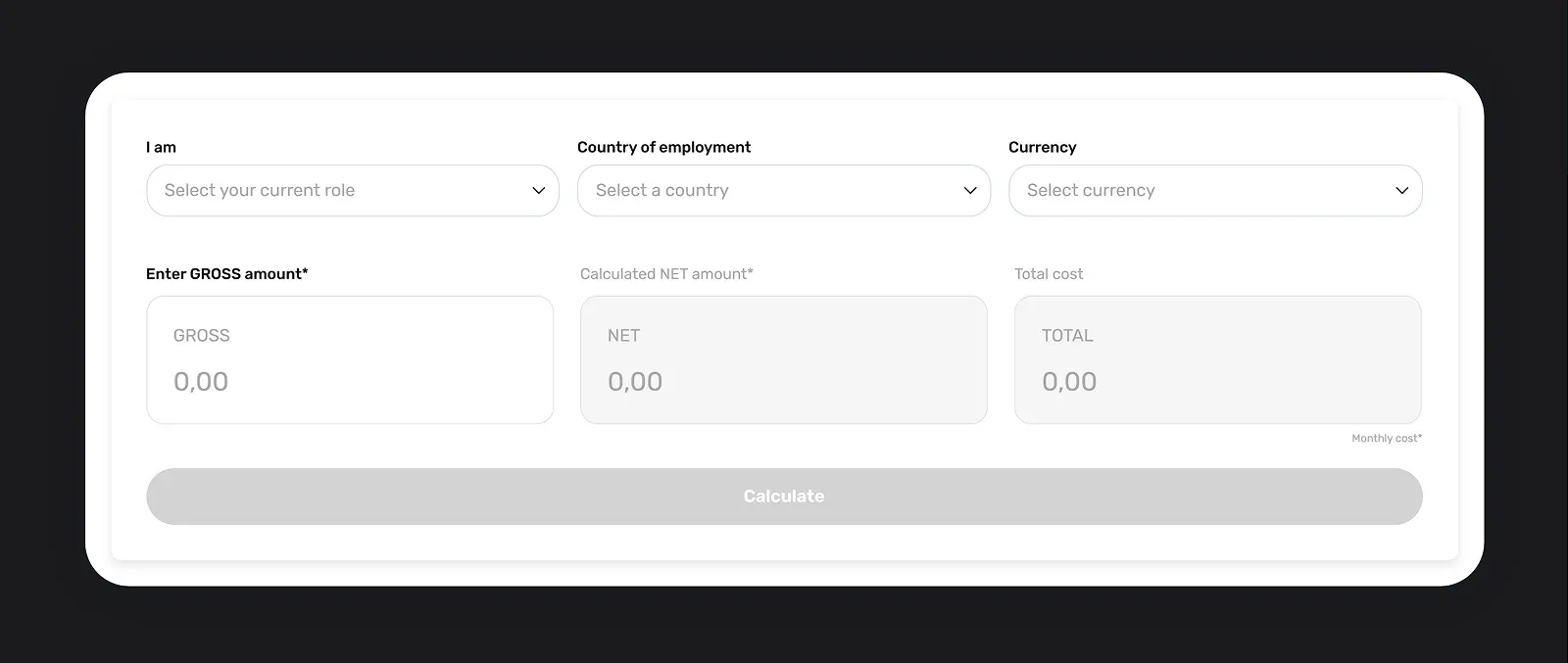What Is HRIS? Definition, Benefits & How It Works [2026]
From tracking employee data and processing payroll to ensuring compliance and managing performance, HR teams often find themselves drowning in spreadsheets, manual processes, and disconnected tools.
Consequently, they spend more time on admin than on strategy, while relying on outdated systems holds businesses back.
Luckily, the solution comes in the form of an HRIS (Human Resource Information System). But what is HRIS?
Read on to learn all about HRIS and the benefits it brings to organisations, helping HR move from paperwork to a people-first strategy.
What is HRIS: Overview and key characteristics
HRIS, or Human Resource Information System, is a centralised system where all critical employee and workforce data lives, giving HR teams a single source of truth they can rely on.
With an HRIS, organisations can manage everything from employee records and payroll processing to benefits administration, time and attendance tracking, and compliance reporting. Instead of juggling multiple spreadsheets or disconnected tools, HR professionals gain one secure, integrated platform that keeps data accurate, accessible, and up to date.
The HRIS also helps with smarter decision-making.
By automating repetitive tasks and syncing information across functions, HRIS frees up time. HR teams can then focus on strategy, employee experience, and workforce planning
The result is a system that improves efficiency and supports long-term growth by helping leaders make data-driven decisions about their people.
Key features and capabilities of HRIS
HRIS provides a comprehensive foundation for efficiently managing the entire employee lifecycle, enabling organisations to be more responsive, predictive, and employee-centric in their HR processes.
1. Centralised employee data management
Modern HRIS platforms capture, organise, and store comprehensive employee information, from personal details to career progression and compensation history.
As a result, there’s no more endless paperwork or fragmented files.
This cloud-based access means HR teams and employees can update or retrieve data anytime, anywhere, even from mobile devices, ensuring information stays accurate and easily accessible.
2. Payroll and benefits automation
HRIS solutions integrate payroll processing with automatic tax calculations, deductions, and compliance with local regulations.
Benefits enrollment and eligibility are also simplified, with employees guided through the process seamlessly.
This results in fewer errors, faster payroll cycles, and smoother compliance management
3. Advanced time and attendance management
Employees can now clock in through biometric scans, mobile apps, or digital cards, with systems automatically logging hours worked, overtime, PTO, and shifts.
AI-powered tools identify inconsistencies or unusual patterns, enhancing both accuracy and fairness while providing managers with real-time workforce visibility.
4. Compliance management
Navigating labour laws and regulations across regions is complex.
HRIS automatically tracks statutory filings, monitors local and international labour requirements, and alerts teams about compliance deadlines.
Built-in reporting tools generate audit-ready documents, reducing risk and shielding your organisation from costly penalties.
5. Employee self-service portals
Modern HRIS empowers employees to take control of routine HR tasks.
From updating personal details and requesting time off to viewing pay slips and selecting benefits, everything is at their fingertips.
This self-service model improves transparency and employee satisfaction while significantly reducing the administrative load on HR teams.
6. Analytics and AI-driven insights
AI-powered HRIS platforms offer predictive insights, such as forecasting turnover risks, identifying future hiring needs, and uncovering skills gaps within the workforce.
As a result, these insights enable HR leaders to transition from a reactive to a proactive approach.
7. Scalability and integration
Whether you employ 20 people or 20,000, HRIS solutions are built to scale.
They integrate with accounting systems, communication platforms, and workforce management tools, creating a connected digital ecosystem.
This flexibility is particularly useful for hybrid and global teams, since it allows smooth collaboration across borders and time zones.
HRIS vs. HRMS vs. HCM: What’s the difference?
Human Resources Information System (HRIS), Human Resource Management System (HRMS), and Human Capital Management (HCM) reflect different scopes and functionalities of HR technology solutions.

1. HRIS (Human Resources Information System)
An HRIS primarily focuses on core administrative HR tasks.
It manages and stores employee data, including personal details, job history, payroll basics, compliance records, and benefits administration.
HRIS serves as the foundational digital database for HR record-keeping and basic payroll processing.
Its main goal is to improve operational efficiency and data accuracy, but it typically handles fewer complex workforce management functions.
2. HRMS (Human Resource Management System)
Building on the HRIS foundation, an HRMS provides a more comprehensive suite of HR operational tools that manage the entire employee lifecycle.
For example, the system can manage:
- Talent acquisition,
- Onboarding,
- Time and attendance tracking,
- Performance management, and
- Extended payroll and benefits capabilities beyond the basic HRIS functions.
HRMS offers deeper workforce management features to support mid-sized to larger organisations with more complex HR operational needs.
3. HCM (Human Capital Management)
HCM represents the most advanced and strategic level of HR software.
It includes all HRMS features and adds enterprise-level workforce planning, talent development, succession management, advanced analytics, and organisational performance tools.
HCM systems optimise talent management, engagement, and development aligned with long-term business objectives.
They typically serve large enterprises seeking comprehensive strategic HR management.

In practice, the lines between HRIS, HRMS, and HCM aren’t always clear.
Modern HR platforms often blend features from all three, and providers may label their product based on branding or the audience they’re targeting rather than strict functionality.
What are the 6 benefits of HRIS systems?
The advantages of adopting an HRIS have grown well beyond basic efficiency.
They now support global workforces, enabling hybrid and remote work, and keeping organisations compliant with tightening labour regulations.
Here are the most impactful benefits HRIS delivers.
1. Efficiency and time-saving
HRIS platforms automate many routine and time-consuming HR tasks such as employee record keeping, leave and attendance management, payroll calculation, and benefits enrollment.
Automation reduces manual errors and frees HR teams to focus on strategic initiatives like talent development and employee engagement.
Self-service portals empower employees to manage their own personal details, PTO requests, and benefits independently, further reducing administrative workload.
2. Improved compliance management
Keeping pace with rapidly evolving labour regulations, tax requirements, and regional laws is a challenge for businesses of all sizes.
HRIS systems embed automated compliance checks, generate audit-ready reports, and provide deadline reminders for filings and certifications.
This proactive compliance management minimises risks of fines and legal exposure, enabling organisations to maintain audit readiness with confidence.
3. Real-time reporting and advanced analytics
Modern HRIS platforms provide intuitive dashboards and real-time reporting on critical workforce metrics such as:
- Employee turnover,
- Performance outcomes,
- Benefits usage, and
- Recruitment trends.
AI-powered analytics and predictive insights support HR leaders in data-driven decisions around workforce planning, identifying skill gaps, and optimising compensation strategies.
4. Employee empowerment and engagement
By offering employee self-service portals with intuitive interfaces, HRIS enhances employee satisfaction.
Workers can access pay stubs, request time off, complete onboarding tasks, or update their profiles without depending on HR staff, which helps foster transparency and trust. As a result, you can improve user experience, which also positively impacts retention and engagement.
5. Cost savings and ROI
By automating administrative tasks and reducing the need for multiple separate systems or external HR services, HRIS platforms deliver significant cost efficiencies.
These operational savings often represent major ROI contributors for businesses, especially small and medium enterprises aiming to control overhead and maintain compliance.
6. Support for Diversity, Equity, and Inclusion (DEI) initiatives
Advanced HRIS tools support equitable hiring and talent management by:
- Standardising workflows,
- Automating performance reviews, and
- Providing unbiased reporting analytics.
They assist companies in tracking DEI metrics, promoting fairness, and offering inclusive benefits, which reinforce a strong, diverse workplace culture.
How can AI enhance HRIS capabilities?
AI enhances HRIS capabilities by introducing automation, advanced analytics, and personalised employee engagement tools that transform HR operations.
1. Automation of routine tasks
- Repetitive work like data entry, report generation, job description drafting, resume screening, and even answering employee FAQs is now handled by AI.
- Chatbots and smart assistants keep things running smoothly, freeing HR professionals to focus on higher-value initiatives such as workforce planning and talent development.
2. Make smarter, data-driven decisions
- AI-powered analytics turn raw HR data into actionable insights.
- HR leaders can forecast hiring needs, identify potential turnover risks, and uncover skill gaps long before they become problems.
- This way, you can stay one step ahead in workforce planning.
3. Personalised employee experiences
- AI tailors the employee journey with individualised career development plans, curated learning recommendations, and targeted communication.
- Conversational AI tools provide real-time assistance, making HR services accessible 24/7 and boosting employee satisfaction.
4. Recruitment and talent management
- From sourcing candidates to screening resumes, AI speeds up the hiring process while reducing bias.
- Beyond recruitment, it enables ongoing talent management with skills intelligence, learning pathways, and performance insights that keep employees engaged and growing.
5. Supporting remote and hybrid work
- As flexible work models become more popular, AI-driven HRIS helps manage productivity, ensure compliance, and create virtual onboarding and engagement experiences, bridging the gap between in-office and remote teams.
6. Privacy, security, and compliance
- With stricter labour laws and data regulations worldwide, AI plays a critical role in monitoring data use, ensuring compliance, and safeguarding sensitive employee information against breaches.
7. Natural Language Processing (NLP) and conversational AI
- NLP allows HRIS platforms to understand employee queries, automate communications, and streamline HR documentation.
- This means faster responses, smoother workflows, and a better overall user experience.
What is HRIS: Wrapping it up
By automating payroll, benefits, and compliance, and leveraging AI for predictive insights and personalised employee experiences, modern HRIS platforms make managing complex, hybrid, and global workforces more efficient and effective.
Choosing the right system can transform HR from a back-office function into a growth-driving, employee-focused operation.
For businesses expanding globally or managing remote teams, Native Teams provide an all-in-one platform that streamlines international payroll, compliance, and benefits, ensuring your workforce stays connected, engaged, and productive no matter where they are.

Native Teams: An all-in-one solution for managing a global workforce
Native Teams is a workforce management platform that streamlines global operations by integrating payroll, compliance, and employee benefits into a single solution.
We combine EOR and PEO solutions so you can hire, pay and manage your global team in more than 85 countries.
Here’s how we can help:
✨ EOR services: Hire, onboard, and pay global talent quickly with no legal entity required while we take care of compliance, payroll, and benefits.
✨ Entity management: if you need to open an entity or already have one, we help you set up, manage, and run multiple entities from one platform, with payroll, contracts, and compliance all covered.
✨ Global workforce payments: We handle salaries, tax obligations, and compliance across over 85 countries to ensure every full-time employee, gig worker or contractor is paid on time, with full cost breakdowns.

✨ Full transparency in every payment: We automatically split every payment into taxes, fees, and net salary, so you stay compliant and informed.
✨ A multi-currency wallet: A centralised digital wallet that supports instant currency conversions and cross-border payments with minimal fees, improving cash flow management.
✨ Compliance: End-to-end compliance with tax laws, labour regulations, and GDPR in every country.
✨ Analytics and reporting: Access local tax experts and country-specific benefits, transparent reporting for audits and planning, and salary cost comparisons across multiple regions.
✨ Flexibility: Scale your workforce up or down, without being tied to rigid legal or payroll structures.
✨ Employee self-service: Employees have access to a user-friendly interface where they can view payslips, manage benefits, and track expenses, enhancing transparency and engagement.
✨ Contracts & documents: We manage the paperwork, employment contracts, M1/M2 forms, and declaration regardless of the employment type, all customised to meet local legal requirements.
✨ Global employee benefits: Offer compliant global benefits tailored to each country’s laws. Build flexible packages with health, well-being, financial, and lifestyle options
Curious to learn more about how we can help you?
Book a free demo today and take the first step toward stress-free global workforce management.
Keep learning:
How EORs Protect Companies From Permanent Establishment Risk?
EOR vs Payrolling: What's the Difference [Full Guide]
Employee Misclassification: Hidden Costs for Global Businesses
